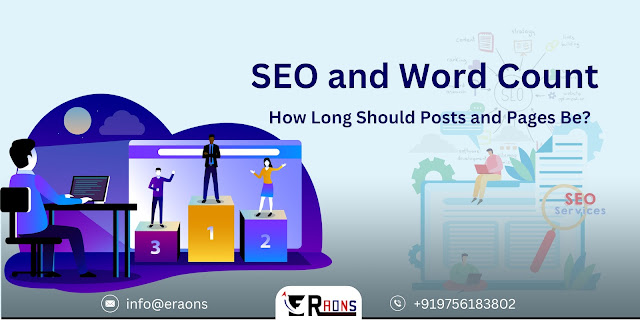SEO and Word Count: How Long Should Posts and Pages Be?
In the ever-evolving landscape of digital marketing, Search Engine Optimization (SEO) remains a critical aspect of any successful online strategy. Among the various factors that influence SEO, the length of your content plays a significant role in determining its visibility and ranking on search engine results pages (SERPs). But how long should your posts and pages be for optimal SEO performance? Let's delve into this question while exploring strategies for writing high-quality, readable content.
Why Does Word Count Matter?
- Search Engines like Google tend to favor longer, more comprehensive content because it often provides more value to users. Longer posts have the potential to cover topics in greater depth, answer more user queries, and offer a more comprehensive solution to search intent.
- Longer content tends to attract more backlinks, which are crucial for SEO. High-quality, lengthy posts are more likely to be shared and referenced by other websites, signaling to search engines that the content is authoritative and valuable.
- word count indirectly affects other SEO metrics such as dwell time and bounce rate. Engaging, lengthy content can keep users on your site longer, reducing bounce rates and signaling to search engines that your content is relevant and engaging.
How to Write a High-Quality Lengthy Post?
- Thorough Research: Start by conducting comprehensive research on your topic to gather relevant information and insights. Use reputable sources and statistics to support your arguments and add credibility to your content.
- Clear Structure: Organize your content into logical sections with descriptive headings and subheadings. This not only makes your content easier to read but also helps search engines understand the structure and hierarchy of your content.
- Engaging Introduction: Capture your readers' attention from the outset with a compelling introduction that outlines the purpose and scope of your post. Use storytelling, statistics, or questions to pique curiosity and encourage readers to continue.
- In-Depth Analysis: Dive deep into your topic and provide thorough explanations, examples, and case studies where applicable. Anticipate and address common questions or objections that readers may have, demonstrating your expertise and authority on the subject.
- Visual Elements: Incorporate visual elements such as images, infographics, and videos to break up the text and enhance understanding. Visuals not only make your content more visually appealing but also cater to different learning styles and preferences.
Write Readable Texts
- Use Clear and Concise Language: Avoid jargon and complex terminology, opting instead for clear and concise language that is easy to understand.
- Break up the Text: Use short paragraphs, bullet points, and numbered lists to break up the text and make it more scannable. This helps readers quickly find the information they're looking for and improves overall readability.
- Optimize for Mobile: With an increasing number of users accessing the internet via mobile devices, it's essential to ensure that your content is mobile-friendly. Use responsive design and avoid large blocks of text that may be difficult to read on smaller screens.
- Proofread and Edit: Finally, always proofread and edit your content before publishing to ensure accuracy, clarity, and coherence. Check for grammar and spelling errors, awkward phrasing, and inconsistencies that may detract from the readability of your text.







Comments
Post a Comment